As an effective sales manager, you are probably always on the lookout for ways to improve your sales team.
But how can you tell whether the improvements are working?
What are the best ways to evaluate sales reps?
These days, “data overload” is a very real risk. We have so many tools at our fingertips to help us measure just about everything — so that is what we do. The result can sometimes be an overwhelming jumble of metrics and reports that even experienced sales managers are not sure how to utilize.
How can you effectively cut through all the noise to find the information you actually need?
The key is to narrow your focus as you leave behind the urge to track everything. Instead, put plenty of effort into making sure you are tracking only the most important information.
You will more easily understand data trends and implications, come to a decision and evaluate sales reps more quickly.
No matter the details of your sales organization and industry several classic metrics are always key for sales managers:
7 Key Sales Performance Metrics
1. Quota Attainment
What percentage of your sales team reaches their quotas?
When you answer this question, you can decipher whether your quotas are too high or low. Conventional wisdom holds that your quotas are probably unrealistic if less than 60% of your sales reps are hitting them.
However, it is also possible you need to hire better salespeople. Your company may also need to part ways with under-performers.
A lower-than-average quota attainment percentage can also reflect your sales compensation plan.
Does your pay structure motivate your reps to sell?
If 90% to 100% of your salespeople are hitting quota, on the other hand, you may want to increase your targets to get the most from your sales force.
2. Total Number of Deals Divided by the Dollar Amount of Those Deals
Calculate your average deal size on a monthly or quarterly basis. This metric tells you whether your contracts are getting larger, smaller or staying the same.
Is your company trying to move toward higher-end customers?
If so, you will want the average deal size to increase. If your organization is trying to cultivate more small-and-medium-sized customers, you will want this number to go down as your overall revenue and number of customers increases.
Average deal size can also help you spot and evaluate sales reps whose average deal size is significantly lower than your sales team’s average.
Are these lower-achieving sales reps going after smaller deals, or discounting too deeply?
This metric can help you decide.
3. Percentage of Leads That Ultimately Become Customers
This is, of course, the classic conversion rate. If you get approximately 250 monthly leads and on average 25 buy your product, your conversion rate is 10%.
The conversion rate metric can help you calculate:
- How many leads you need to reach your revenue goals. For instance, if your monthly team quota is $500,000 and your average deal size is $1,000, your salespeople need to close 500 deals. If 10% of your leads become customers, you will need 5,000 leads per month.
- Whether your sales reps are effective. If a sales rep’s average conversion rate is increasing while closing the same or greater quantity of deals, then that sales rep’s performance is improving. Is someone’s quantity of deals is staying stagnant or decreasing? It might be time to take a look at your overall process, team or lead gen strategies.
4. Weak Points in Your Sales Funnel
Where do prospects drop out of your sales funnel most often?
Track stage-by-stage conversion rates to find out where your sales reps might need improvement.
For example, say 40% of prospects agree to a discovery call. Then, half of those prospects make it to the demo stage. From there, just 4% end up making a purchase.
Why the sudden decline?
This information can help you evaluate your sales reps. Maybe they are not qualifying prospects properly, providing low-quality demos, negotiating ineffectively — or a combination of all these issues.
5. Sales Reps’ Smaller Actions and Activities During the Sales Process
As your sales reps work opportunities and build their pipelines, tracking leading indicators gives you a chance to do mid-course corrections if necessary.
To zoom in on these indicators, ask your sales reps:
- How many calls do they have each week? (And who is the specific target?)
- How many calls turn into opportunities?
- How many calls turn into conversions?
From there, you can evaluate your sales reps as you measure them against your industry’s benchmarks.
6. Sales Cycle Duration
In this context, duration refers to the average time opportunities (both won and lost) spent in each stage of the sales process.
This piece of information takes time to collect. Historical data on your average sales cycle reveals which types of prospects are likely to buy, and which are at risk.
How long can each opportunity spend in a certain stage before it has historically been at risk?
Your mission is to gain a clear understanding of how won and lost opportunities compare by stage. From there, you can evaluate sales reps’ performance and better prioritize their time.
7. Win Rate by Deal Size
Do your sales reps have difficulty closing deals above (or below) a certain size?
Measuring how deal size affects your sales reps’ win rate is powerful information. It can help you effectively schedule out your reps’ time, better understand the opportunities in your pipeline and identify the best deal size for each of your salespeople.
Carefully Evaluating Sales Reps is a Must
In today’s world in which companies compete from around the globe, keeping a competitive advantage can feel increasingly difficult.
But the skillful ability of sales managers to evaluate sales reps will continue to propel sales teams to maximum efficiency and effectiveness. This will always be a competitive advantage.
The DriveTest®, our sales hiring assessment, helps you identify from the very beginning whether your sales candidates have the most critical personality trait needed for success: Drive. Learn more about this non-teachable trait here.
 Account Login
Account Login






